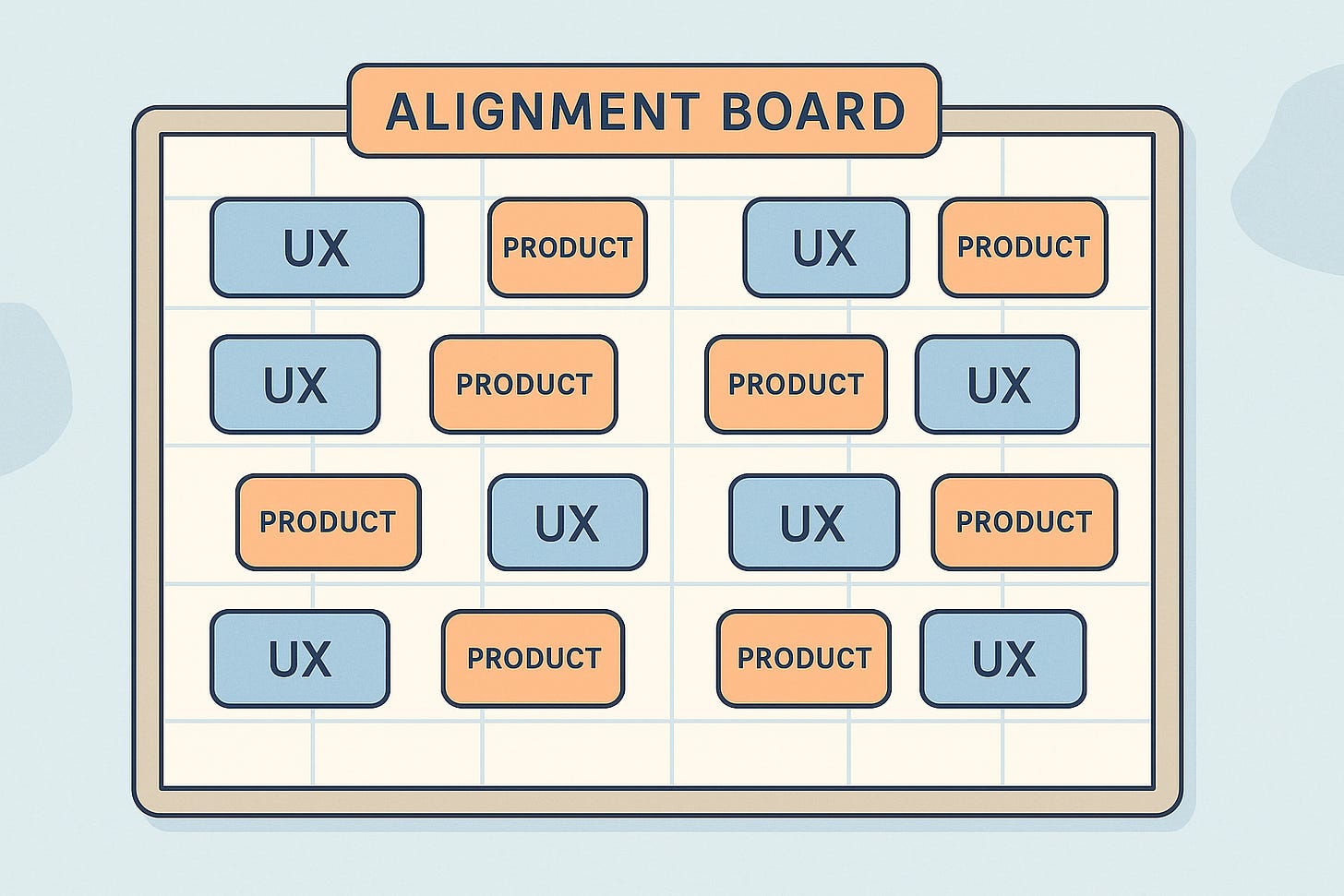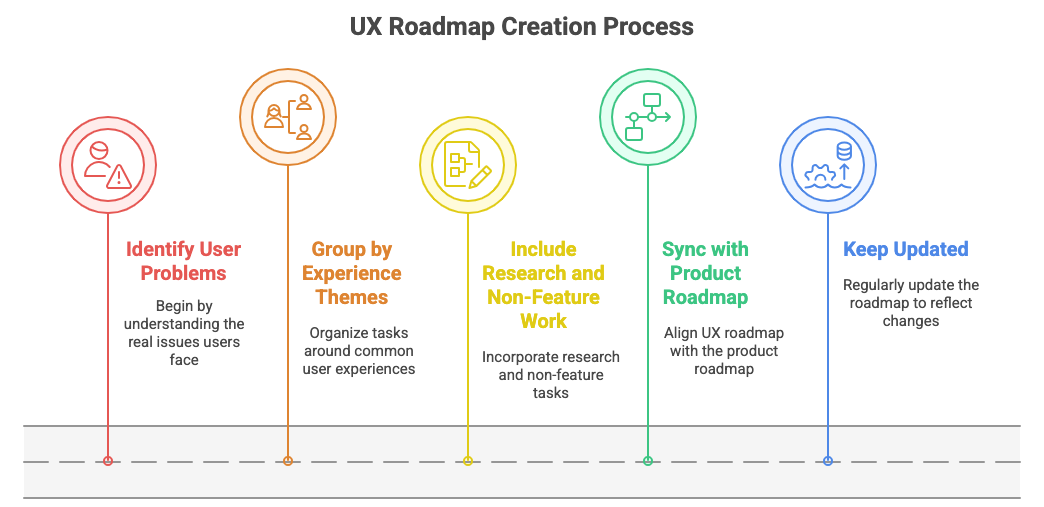When UX Roadmaps Clash with Product Roadmaps
What happens when design priorities don’t match business priorities?
If you’ve ever tried to align a UX roadmap with a product roadmap, you know the tension.
UX wants to fix usability debt, improve flows, and run research.
Product wants to ship features, respond to competitors, and hit quarterly goals.
The result? Clashes. Important UX work gets deprioritized, while design teams feel like they’re always catching up instead of shaping the future.
But some teams have cracked the code - building alignment that makes both roadmaps stronger. Others… not so much.
In This Issue, we’ll discuss:
Why Roadmaps Clash in the First Place
The Hidden Costs of Misalignment
Lessons from Teams That Solved It
Stories from Teams That Failed
Practical Tactics for Building Shared Roadmaps
UXCON25 Spotlight: Collaboration That Scales
Resource Corner
Why Roadmaps Clash in the First Place
Different measures of success: UX measures ease, satisfaction, or reduced friction. Product measures revenue, adoption, and deadlines.
Time horizons: UX thinks in years (“build trust, reduce debt”). Product thinks in quarters (“ship features to hit OKRs”).
Ownership confusion: Who decides if fixing onboarding is more important than launching a new integration?
Clashes aren’t about bad intent, they’re about different lenses on value.
The Hidden Costs of Misalignment
User frustration: Debt piles up and friction remains unresolved.
Team morale: UX feels sidelined, product feels slowed down.
Business risk: Rushed features shipped without design foundations lead to churn, support tickets, and rework.
Lessons from Teams That Solved It
Embed UX in planning early: Teams that invite UX into quarterly planning see fewer last-minute conflicts.
Translate UX work into business terms: Example: “Fixing checkout flow” → “Could recover 15% of abandoned carts.”
Run shared prioritization workshops: Map features and UX initiatives on the same effort/impact matrix.
Create hybrid OKRs: Pair UX metrics (task success rate) with product metrics (conversion, retention).
Stories from Teams That Failed
Case A: A startup prioritized flashy new features over fixing onboarding. Six months later, churn spiked, and new features barely landed.
Case B: An enterprise team treated UX as “tickets.” UX debt grew so large that redesigns took years instead of months.
Case C: A product leader cut research “to save time.” The resulting feature launched with poor adoption and was sunset in one quarter.
When UX loses roadmap battles consistently, both the product and the business lose.
Practical Tactics for Building Shared Roadmaps
Frame UX debt as risk. Instead of “We need to fix navigation,” say “Navigation confusion is causing 25% of support tickets.”
Use dual-track planning. One track for discovery (UX, research), one for delivery (features).
Align cadence. Run UX roadmap reviews alongside product roadmap reviews.
Celebrate wins. When UX improvements drive measurable outcomes, make sure the whole org hears about it.
🚨 6 Days Left
In less than a week, UXCON25 begins.
Connect with different UXers and cross-functional professionals in one room
4 keynotes on the future of UX, ambiguity, leadership, and connection
2 panels on careers and industry shifts
1 workshop that will change how you lead
Recruiters + hiring managers who can open doors
If you’ve been waiting, this is your last chance.
🎟️ October 9. One day. One community. Your chance to connect for real.
Resource Corner
Final Thought
UX and product roadmaps will always have tension and that’s not a bad thing. Tension means different perspectives are in play.
The challenge is whether that tension creates alignment or conflict.
The strongest teams don’t let UX and product fight for space. They build a shared vision where design debt, user needs, and business goals live on the same roadmap.







